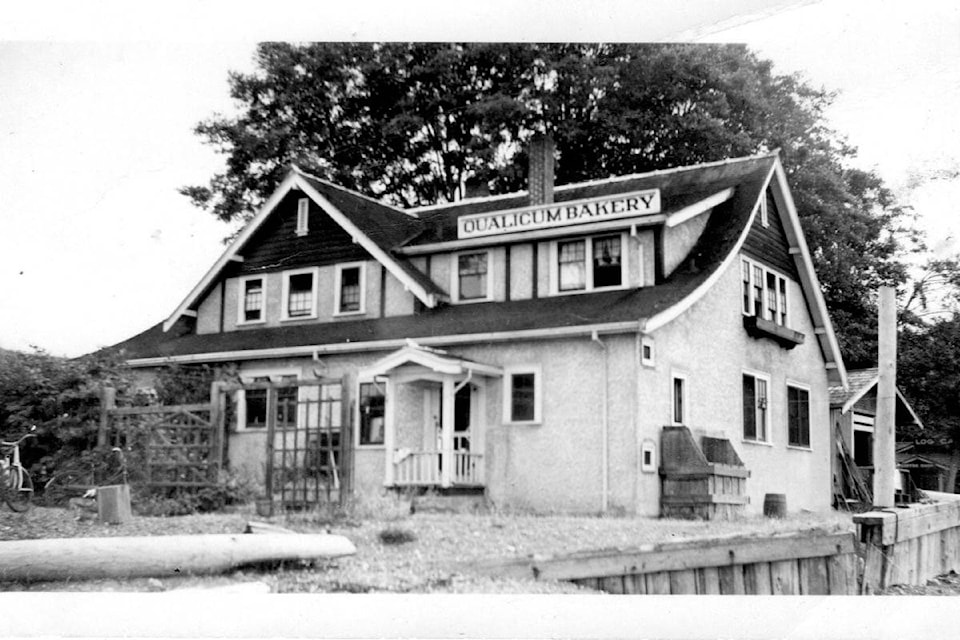Beverly Brendon is a tour guide who runs Qualicum Beach Historial Walking Tours. She is passionate about local history and has gone to great lengths to research the town’s foundation.
This series will focus on the stories of European settlers to the region, as Brendon believes that the stories of First Nations’ peoples are not hers to tell.
Brendon acknowledges the presence of Coast Salish peoples for thousands of years before the arrival of the first European settlers. She recognizes that the Town of Qualicum Beach is within the traditional territory of the Qualicum First Nation.
“Indigenous peoples’ ways of honouring the environment through myth and art, story and language is more relevant today than it has ever been. However, their stories are, of course, theirs to tell,” said Brendon.
The name Qualicum comes from the Pentlatch word for dog salmon: “Sqwaluxw.” Qualicum is an English interpretation of “Xwkwa’luxwum” meaning “where the dog salmon run.”
READ MORE: History: What’s in a name, Qualicum Beach?
First things first - why are you so interested in Qualicum Beach’s history?
“I actually wrote my first articles about Qualicum back in 1992, when Qualicum Beach was celebrating its 50-year anniversary of its incorporation as a village,” said Brendon.
When Brendon wrote that article, she had just arrived in Qualicum Beach from Vancouver. Both her mother and uncle owned summer properties in the town.
The Arrowsmith Star was looking for information about the town’s history, and Brendon interviewed her family members. Her uncle, John Miller, helped run the family bakery, first on 2nd and Memorial and then on the beach. The anecdotes he told about characters that were seemingly larger-than-life piqued her interest.
“It was really curiosity. And just convenience, of having my uncle right there,” said Brendon.
“These little stories that he started to tell me … what it did for me, was it brought the past to light in a way. And I get a kick out of that. And I thought that other people might enjoy having the past brought to life.”
How did you come to know so much about Qualicum Beach’s history?
Brendon dug into the facts behind the tidbits that her uncle passed along.
It was those stories that seemed especially strange that really sent her diving into whatever records were available.
“When he told me about J. J. Elliott who carved jewelry from ivory mastodon tusks, it just seemed so bizarre to me. It wasn’t that I didn’t believe him, but you sort of want some sort of research to confirm it,” said Brendon.
She turned to the Victoria Colonist, which has been a wealth of information for Brendon. The outlet has digitized their newspaper files from 1870 to 1980.
In addition to family stories and the Victoria Colonist, she’s compiled her information from about thirty different sources. She uses articles found in the the library, and references local literature like Brad Wylie’s Qualicum Beach: A History of Vancouver Island’s Best Kept Secrets, Claud N Buchanan’s 100 Years of Golf in Qualicum Beach, and publications by Art Skipsey aka ‘Mr Qualicum.’
READ MORE: New book from Island author details social history of the E&N railway
Who were some of the biggest movers and shakers in Qualicum Beach’s history?
For Brendon, that would have to be Noel Ernest Money. Originally from Montreal, Money served in the First World War as a brigadier-general, later settling in Qualicum Beach.
“He was a particularly multifaceted individual … he just had an influence in so much of the shaping of the town that I think of all the people, he’s the most fascinating to me, somehow,” said Brendon.
Money was involved in many aspects of the town - had a controlling interest in the Qualicum Beach Hotel and Qualicum Beach Golf Club, he was the president of the Qualicum Board of Trade from 1929-1936 and was also an avid fisherman and hunter.
It also helps that he left a great amount of information about his life.
“I was fascinated by the idea that he kept all these game books. He filled three ledgers. these were these printed ledgers with, across the top — fish caught, animals killed — in a very detailed manner he recorded every single thing he caught, where he caught it, and when he caught it. They serve as a bit of a diary, they are still around,” said Brendon.
Money fished often at the Stamp River and owned a small cabin nearby. The spot he frequented was nicknamed “Money’s Pool,” and a photo of him fishing there made it to the Sunday edition of the Shanghai Times on Sept. 11, 1932.
Personal eccentricities of Money’s also spark Brendon’s historical imagination — he went everywhere wearing plus fours (golfing pants) and drove a Packard car with the license plate “1” on it.
This is the first in a three-part series about Qualicum Beach’s history. Stay tuned for the next installment, where Brendon talks about the famous people who’ve spent time on Qualicum Beach’s shores, where she would go if she could travel back to one event in Qualicum Beach and more.
